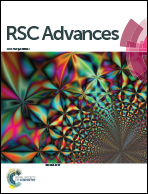Improvement on contamination resistance to volatile organics and moisture of sol–gel silica antireflective coating for 351 nm laser system by structural modulation with fluorinated compounds
Abstract
A new silica antireflective (AR) coating with excellent spectral stability and laser-induced damage threshold (LIDT), which are crucial characteristics in high-powered laser systems, was prepared using the sol–gel method. First, aided by 2,2,3,3,4,4,5,5,6,6,7,7-dodecafluoro-1,8-octanediol (simplified as DFDO), cross-linking among silica particles was facilitated. Thus high and adjustable inter-particle porosity was obtained and hence the refractive indices of the coatings were modulated. Next, poly(2,2,3,4,4,4-hexafluorobutyl) acrylate (simplified as PHFBA) was utilized to occupy micro-pores inside the coating in order to protect them from contamination. Consequently, the volatile organic and water vapor resistance of resultant DFDO/PHFBA/silica coatings was improved dramatically. By characterizing aggregating manner and stacking condition between particles, the modification process of the proposed AR coating was clarified in details.


 Please wait while we load your content...
Please wait while we load your content...